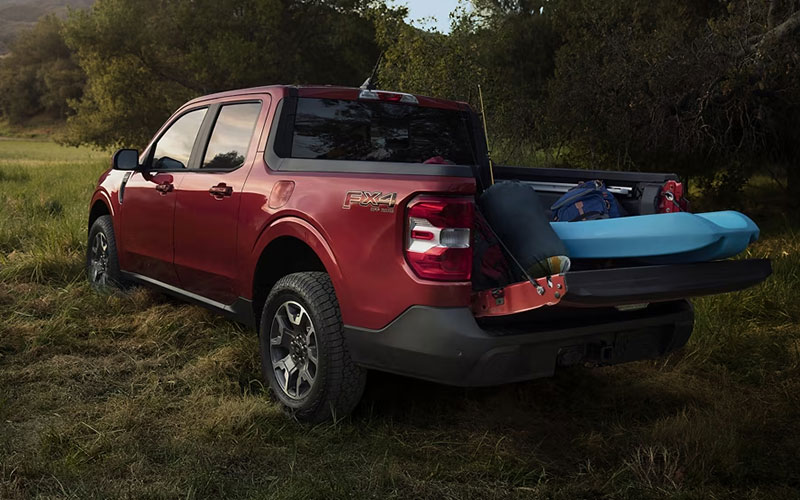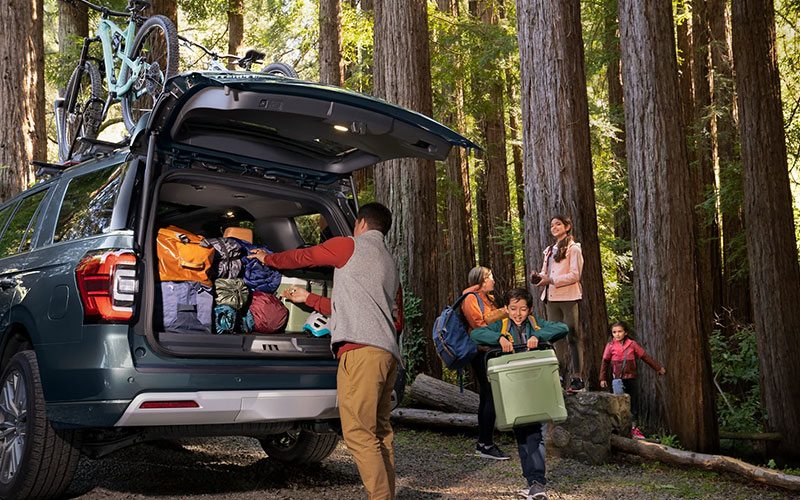Tailgate vs. Liftgate: Which Option Is Right for You?

There are a lot of automotive terms that have meanings which aren’t exactly obvious. You also sometimes get two different terms that are used interchangeably, even if they don’t actually have the same meaning. This is something that happens quite a bit with the terms “tailgate” and “liftgate”. To help clear up the confusion, we’ve put together this guide to what these terms mean, and what vehicles you’ll find them on.
What’s the Difference Between a Tailgate and a Liftgate?

Tailgates
A liftgate might sometimes be called a tailgate, but the good news is that a tailgate is generally not mistakenly called a liftgate. The reason is simple: a tailgate doesn’t lift; it’s hinged on the bottom and creates a flat surface when fully open. Tailgates are found on pickup trucks as a rule, although the Bronco is one of the few SUVs to have one as well. This is obvious on soft-top Bronco models, but even hard-top models have a split tailgate, with the top portion opening upward and the bottom portion opening to the side. This is also one exception to the tailgate being hinged on the bottom, but it does bring us to our next point. Ford’s Pro Access Tailgate, available on the F-150, can be operated like a conventional tailgate, but the center section can also be opened to the side, making it easier to reach further into the bed. This feature is unique to Ford, and just one of the reasons why Ford pickups have been the most popular in America for decades.
Advantages of Tailgates
- Flexibility - Tailgates generally offer multiple positions: fully open, fully closed, and halfway open. Together with the option of the Pro Access Tailgate, there are quite a few different ways to carry and access cargo.
- Removable - Sometimes, the cargo requires the tailgate to be removed entirely, particularly in situations like gooseneck towing. Tailgates are designed to make this quick and easy.
- Simplicity - Power tailgates and the Pro Access Tailgate add useful features, but ultimately, a tailgate is a simple and easy-to-operate piece of equipment.
Ford Models Equipped with Tailgates
- Ford Maverick
- Ford F-150
- Ford F-150 Lightning
- Ford Super Duty
- Ford Bronco

Liftgates
The name liftgate gives us a hint as to what differentiates it from a tailgate; a liftgate is hinged at the top to open upwards. Sometimes, you will even see another manufacturer refer to a liftgate as a tailgate, but those are generally manufacturers that don’t produce any pickup trucks, so they don’t feel the need to differentiate. For Ford, liftgates are found on SUVs, with the exception of the Bronco, as we previously mentioned. And while Ford doesn’t currently build any, you can also find liftgates on minivans, station wagons, and hatchbacks. Since a liftgate goes up and out of the way, it makes it easy to reach further into the vehicle when loading or unloading cargo, which is important when you don’t have a bed with an open top. Powered and hands-free liftgates have made them even easier to use in recent years.
Advantages of Liftgates
- Comfort - Unlike tailgates, liftgates are always at least hydraulically assisted, if not powered. You never have to strain with a liftgate.
- Adjustability - Ford offers height-adjustable liftgates on several models, which let you set a predetermined opening height, making it easier to negotiate tight spaces.
- Overhead Protection - Everyone has had to load or unload groceries in the rain at some point. Unlike a tailgate or a trunk lid, a liftgate will make things a bit less unpleasant.
Ford Models Equipped with Liftgates
- Ford Escape
- Ford Bronco Sport
- Ford Explorer
- Ford Expedition
- Ford Mustang Mach-E

